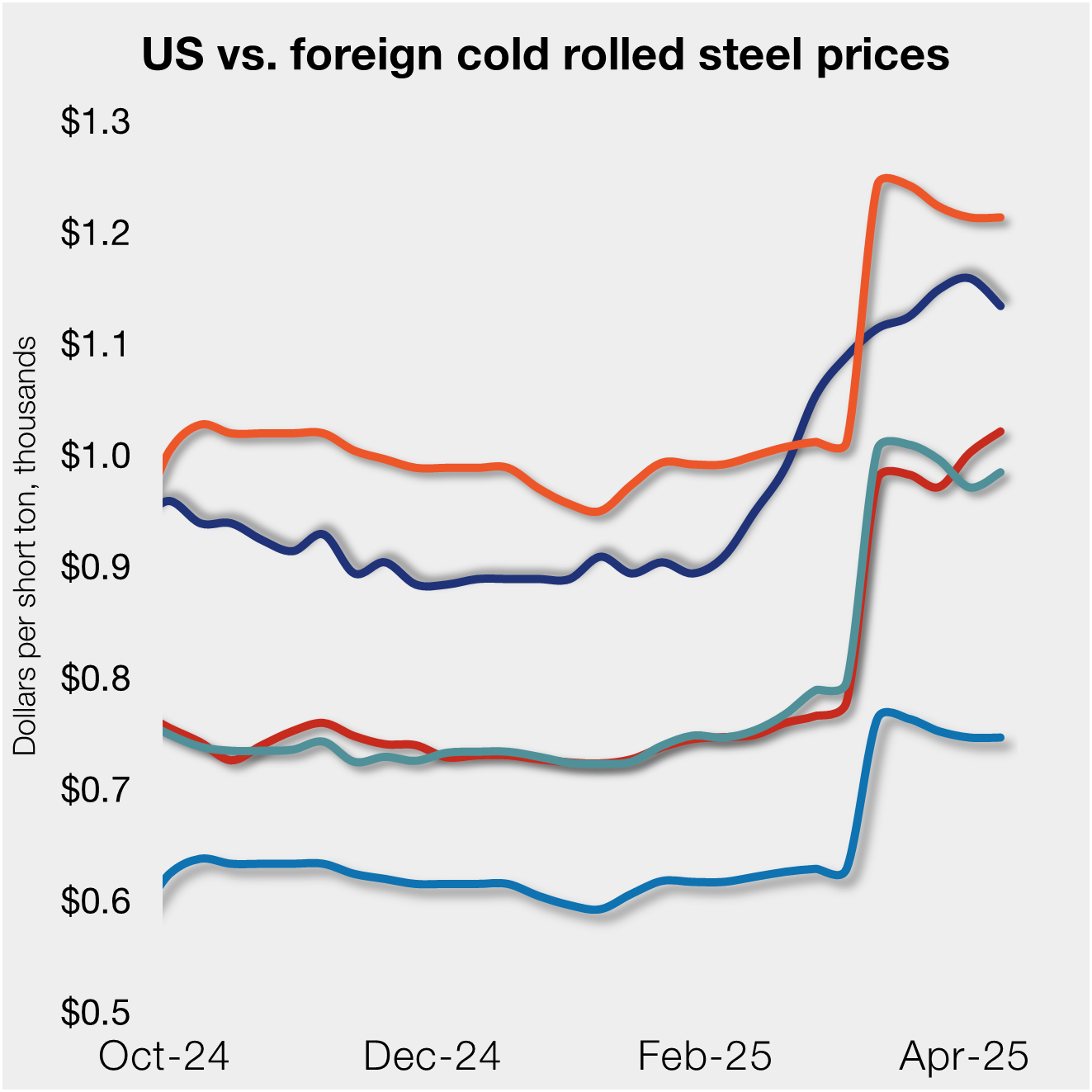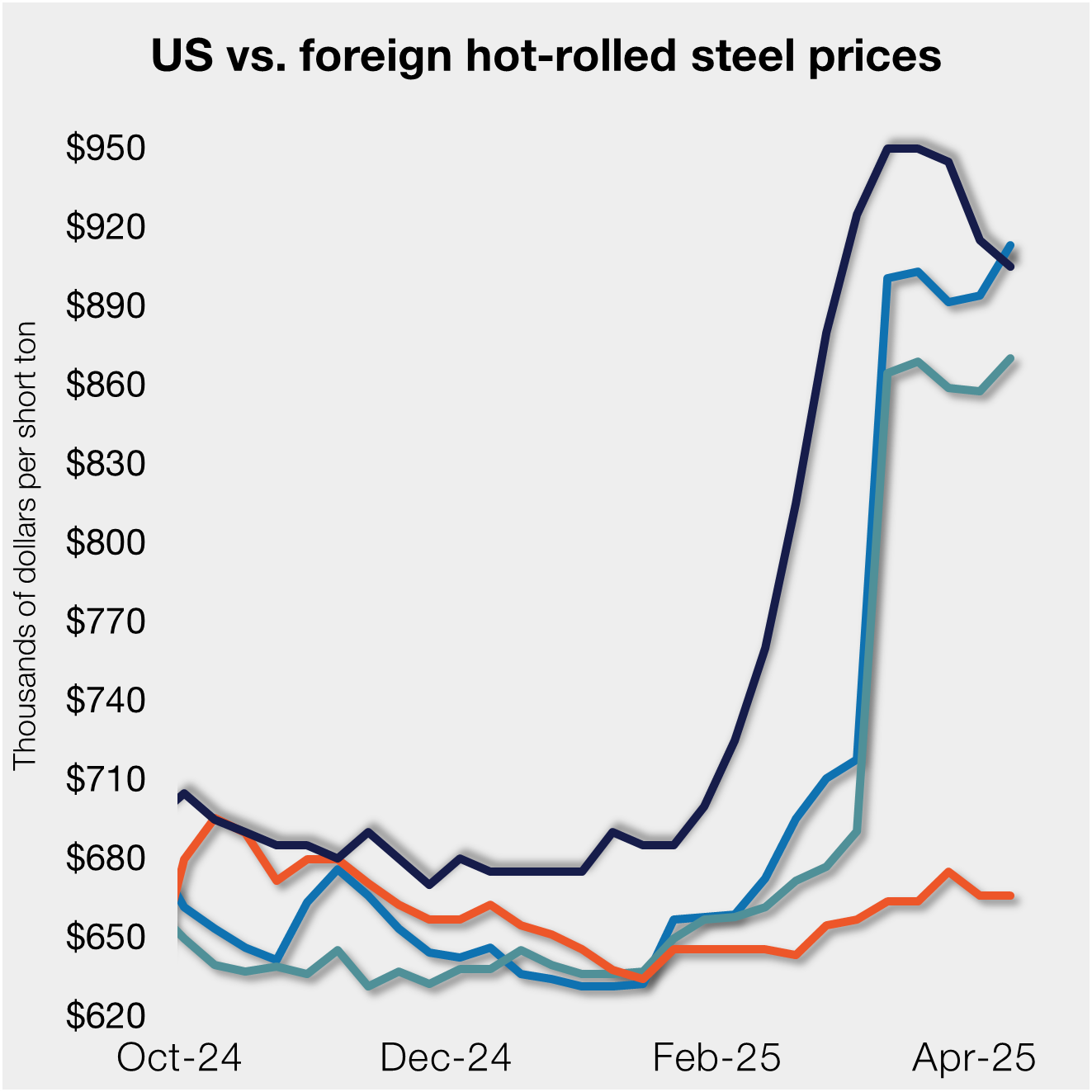Steel Products
AGC: Construction Demand and Strong Economy Offset Labor and Tariff Woes
Written by Sandy Williams
July 31, 2018
Construction employment increased in 272 (76 percent) out of 358 metro areas between June 2017 and June 2018, declined in 44 (12 percent) and was unchanged in 42, according to a new analysis of federal employment data released today by the Associated General Contractors of America. Association officials noted that, for now at least, the growing economy and strong demand for construction services appear to be offsetting cost increases caused by significant labor shortages and newly-imposed trade tariffs.
“Increases in construction employment in the past year were widespread and strong, as employment increased in three-fourths of metro areas,” said Ken Simonson, the association’s chief economist. “Workers in most metro areas are benefitting as firms keep pace with strong demand for construction services.”
Simonson noted that more metro areas added construction jobs in the past year than in any 12-month period since February 2015. The economist added that 64 metro areas set new construction employment highs for June, including San Jose-Sunnyvale-Santa Clara, Calif., where the previous high for June was set in 2001, and Midland, Texas, which exceeded its previous June peak by 20 percent.
The Houston-The Woodlands-Sugar Land, Texas, metro area added the most construction jobs during the past year (19,300 jobs, 9 percent), followed by Phoenix-Mesa-Scottsdale, Ariz. (13,100 jobs, 11 percent); Dallas-Plano-Irving, Texas (12,200 jobs, 9 percent); Atlanta-Sandy Springs-Roswell, Ga. (8,400 jobs, 7 percent) and New York City (8,300 jobs, 5 percent). The largest percentage gain occurred in Merced, Calif. (700 jobs, 28 percent), followed by Midland, Texas (6,700 jobs, 24 percent); Weirton-Steubenville, W.Va.-Ohio (19 percent, 300 jobs); New Bedford, Mass. (18 percent, 500 jobs) and Leominster-Gardner, Mass. (18 percent, 400 jobs).
{loadposition reserved_message}
The largest job losses from June 2017 to June 2018 were in Middlesex-Monmouth-Ocean, N.J. (-3,400 jobs, -8 percent), followed by Newark, N.J.-Pa. (-2,800 jobs, -6 percent); Nashville-Davidson–Murfreesboro–Franklin, Tenn. (-2,300 jobs, -5 percent); Columbia, S.C. (-2,100 jobs, -10 percent) and St. Louis, Mo.-Ill. (-1,800 jobs, -3 percent). The largest percentage decreases—10 percent each—occurred in Columbia, S.C., and Hanford-Corcoran, Calif. (-100 jobs), followed by Middlesex-Monmouth-Ocean, N.J.; Kokomo, Ind. (-8 percent, -100 jobs); and Bloomsburg-Berwick, Pa. (-8 percent, -100 jobs).
Association officials said strong economic growth, buoyed in part by lower tax rates and regulatory reforms, were helping drive demand for new construction projects in most parts of the country. Economic growth also appears to be offsetting the impacts of labor shortages and rising materials prices caused by trade tariffs for many construction firms, they added. But they cautioned that the benefits could be short-lived if materials costs continue to increase and labor becomes even more scarce.
“Tax and regulatory reform are helping put a lot of people into high-paying construction jobs across the country,” said Stephen E. Sandherr, the association’s chief executive officer. “Finding ways to quickly resolve trade disputes and encourage more people to work in construction will help put even more people to work.”

Sandy Williams
Read more from Sandy WilliamsLatest in Steel Products

SMU flat-rolled market survey results now available
SMU’s latest steel buyers market survey results are now available on our website to all premium members. After logging in at steelmarketupdate.com, visit the pricing and analysis tab and look under the “survey results” section for “latest survey results.” Past survey results are also available under that selection. If you need help accessing the survey results, or if […]

CRU tariff webinar replay now available
CRU’s latest webinar replay on how Trump’s tariffs affect the global steel market is now available on our website to all members. After logging in at steelmarketupdate.com, visit the community tab and look under the “previous webinars” section of the dropdown menu. You’ll find not only this special CRU webinar but also all past Community […]

US, offshore CRC prices diverge
US cold-rolled (CR) coil prices declined this week, slipping for the first time since early February. Most offshore markets deviated, moving higher this week.

Construction growth slowed in March on tariff woes: Dodge
The decline comes after reaching a record high in January to kickstart the year.

Return of S232 zapped gap between US and EU HR prices, Asian HR remains cheaper
Domestic hot-rolled (HR) coil prices declined this week for a third straight week. Most offshore markets bucked the trend and gained ground. Uncertainty in the US market around tariffs, especially after “Liberation Day,” caused US prices to slip as buyers moved to the sidelines. It’s unclear to date whether the 90-day pause on the more […]
